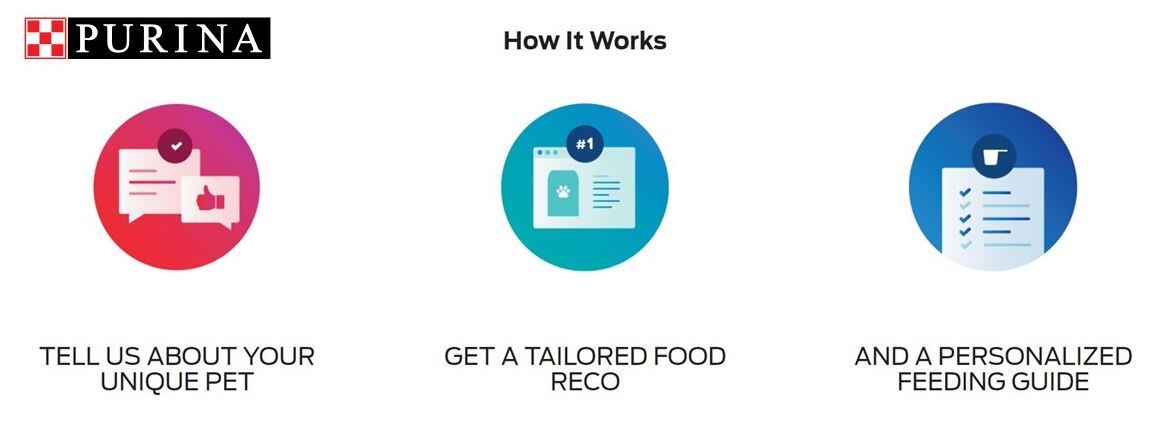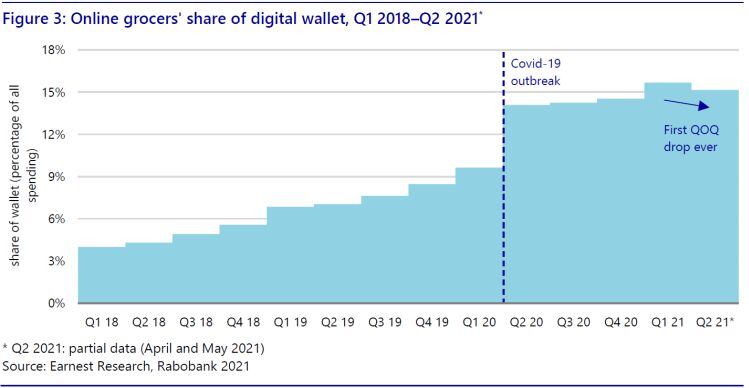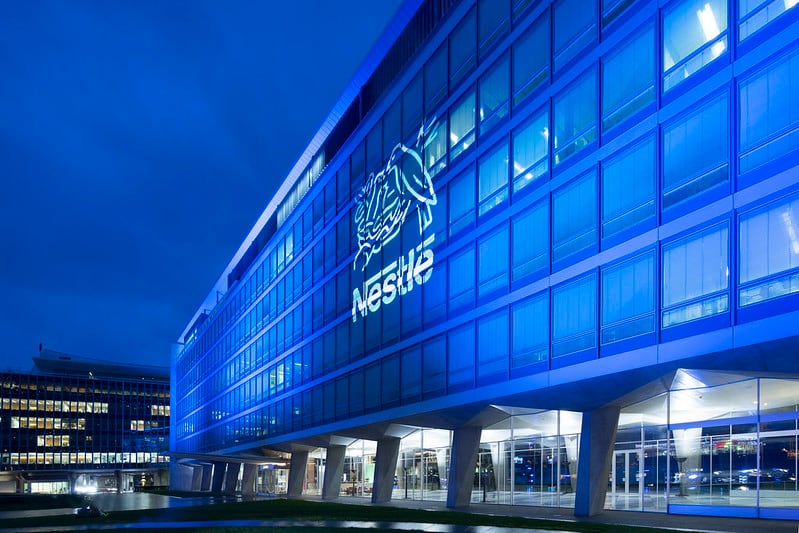“We have a group called new business ventures that's focused on things like direct to consumer, last mile delivery and other growth opportunities,” said Cash.
“So one thing we’re looking at is how do we meet consumers in places where they've started going more, so gaming is one that’s really top of mind; think about the rise of consumers on platforms like Twitch over the last 12 to 18 months. So we’ve got brands like Hot Pockets that are huge in terms of the snacking space and particularly when you think about gaming.
“We ran an initiative called ‘Pockets for Bits’ where consumers could take a picture of their Hot Pockets receipt and earn points they could redeem on [live streaming platform for gamers] Twitch [Twitch Bits].
"The program was a huge success for the Hot Pockets brand, generating over 1 million combined hours of watch-time on Twitch, a +41% lift in brand mentions on social media, +14% lift in unaided awareness, and a 36% conversion rate (far outpacing traditional couponing programs). Additionally, the program was recognized across the industry winning 7 Shorty Awards, a Bronze Reggie Award, and is a finalist for The One Show awards as well.
“We’re also thinking about how to integrate other brands into that [gaming] occasion a little bit more but do it in a way that's really authentic.”
‘From a last mile delivery standpoint, we've done a bunch of experimentation in the last year’
For some brands, such as Toll House Cookies, e-commerce partnerships are opening up novel opportunities for consumers to “experience our products in a way that you can't [through traditional channels],” said Cash, highlighting an initiative trialed in Washington D.C. earlier this year enabling consumers to order warm Toll House cookies to their homes.
She added: “From a last mile delivery standpoint, we've done a bunch of experimentation in the last year. Leveraging newly-developed ghost kitchens and strong partnerships with DoorDash, GrubHub and UberEats, Nestlé has delivered everything from warm, freshly baked Toll House cookies to Nesquik and Stouffer’s lasagna and mac-n-cheese to Chameleon Cold Brew coffee, arriving at consumers’ doorsteps in 30 minutes or less.
"Given the success we’ve seen with these programs, plans are in development to expand in 2021."

E-commerce sales accounted for 14.5% of Nestlé's group sales in Q1
Investments in e-commerce mean Nestlé is well-placed to capitalize on three pandemic-fueled changes in consumer behavior highlighted by CEO Mark Schneider in the firm’s latest earnings call, “increased working from home, pet parenting, and the search for health and immunity benefits,” says the company, which said e-commerce sales accounted for 14.5% of group sales in the latest quarter.
The endless virtual shelf?
One big part of of Nestlé’s e-commerce strategy is working in partnership with leading food retailers that have created their own online shopping platforms, and ensuring that the experience is optimized, said Cash.
And in some ways, many of the rules that apply to physical stories also apply online, she said. So while one obvious advantage of the virtual shelf is being able to offer limitless variety (finally a chance to sell that cardamom ice cream SKU), you still have to make it easy for people to find what they want.
“It can almost seem counterintuitive when I talk about it, but one of the things we’ve found is that [too much choice] can be overwhelming [online or offline]. As you stroll the aisles at a traditional brick and mortar retailer, in some ways it's easier to find things than when you're on a digital platform, so how can we help simplify that navigation?
“It’s a case of understanding what consumers need as they navigate the e-commerce platforms of some of those traditional retailers, which could be everything from availability [ensuring products are in stock], to ensuring we've got the rights sizes and formats, but also looking at simplification.”
Search is king
When it comes to online shopping – whether on Google, Amazon, or on a retailer’s website, she said – “Search is king, so I think in many ways our job is making sure we're being really smart about understanding how consumers are navigating and searching for the things they want and making it really easy to find what they're looking for within our portfolio.”
She added: “There’s [an opportunity for] customization and personalization, we're a bit early on in that evolution, but as we talk with our retail partners, we’re really thinking about how do we take that experience to the next level as we think about offerings that may be more available on e-commerce or easier for a click and collect format than they are in brick and mortar, that creates something that feels even more personalized for the consumer.”
‘As we think about search, that early navigation to get into the cart the first time becomes critical’
What’s becoming clear is that consumers tend to be creatures of habit when they go food shopping online – just as they are offline - so unless brands are able to break established patterns, it can be hard to get on the shopping list, said Cash.
But if you do get on that initial list, there’s a strong chance of repeat business, as many online shoppers buy the same basic list on repeat and just make small adjustments here and there, she added.
“It’s the same kind of behavior we see in brick and mortar, the nature of habitual purchase. I used to work in categories where we did ethnography and we asked all these questions about how consumers would shop and they were like, ‘You know, I just always buy the purple one… It’s the same online. And so as we think about search, that early navigation to get into the cart the first time becomes critical.”
She added: “The other piece is bringing forward new ways to think about promotions... Amazon is notorious for experimenting with different kinds of promotions. Hey you bought this, what about that? Or would you like to try this for free? And so we're experimenting in the same way with the kind of promotion that feels like it's built off of what we know consumers are interested in, so it’s not intrusive, but it just allows us to be a bit more top of mind.”
Where to play: ‘Certain categories just lend themselves [to having a DTC platform]’
So what about direct to consumer sites? For some products that are bulky and purchased regularly, but also involve customization and real consumer engagement, such as petfood, Nestlé has already made significant strides to build its e-commerce business, but there are other areas that arguably lend themselves equally well to direct-to-consumer e-commerce that may be underdeveloped, said Cash.
While Nestlé dominates the global coffee market, for example, Nestlé brands such as Nespresso, Chameleon and Blue Bottle don’t appear in the initial rankings if you search for ‘coffee’ on Google and select ‘Shopping.’
Once a shopper gets to a third party site such as Walmart.com or Amazon.com, however, said Cash, “We're really taking the opportunity within those sites to maximize how we position our brands to be at the top of the heap, versus if you search for a blanket term like ‘coffee’ on Google, it's a bit of a tougher road to get yourself up to the top.”
‘First you have to ask yourself does it make sense for the consumer? And then, does it make sense for us as a business?’
So where does it make sense to develop and promote a direct to consumer offering, and where does it make more sense to direct shoppers to third party sites such as Walmart.com?
For some brands, it will be a case of directing shoppers to third party websites more proactively, she said: “Life Cuisine partnered with Facebook and Instagram and Pinterest… so if you come across an ad for Life Cuisine, you can then click on it, and it'll take you to whatever retailer you want to purchase from.”
As for direct to consumer: “Obviously we've seen a lot of opportunity in this space as you see with our acquisition of [prepared meal delivery business] Freshly,” said Cash, who noted that several Nestlé brands including Blue Bottle (coffee), Chameleon (coffee), Nespresso (coffee), Garden of Life (supplements), and Gerber (infant and baby food) also have sites enabling consumers to shop directly.
“First you have to ask yourself does it make sense for the consumer? And then, does it make sense for us as a business?
“So coffee is something consumers often buy in bulk, with regularity. They also have specific things they may be looking for, so [there are opportunities for] customization, so there are certain categories that just lend themselves [to having a DTC platform].”

Athome.Starbucks.com: ‘There's so much traffic and so much engagement already’
So what does this mean in practice? Is Nestlé building a DTC platform for Starbucks packaged products?*
Right now, if you click ‘buy now,’ on the Athome.starbucks.com website, you’re directed to third party sites such as Walmart, Target and Amazon, said Cash, who said, "We have nothing additional to announce at this time" as regards building a DTC platform.
However, Nestlé has been steadily adding content to the site to engage consumers, she said: "We’ve started to put resources there around different ways to learn to brew at home; we doubled the content available on the website in 2020, including adding instructions to create trendy recipes such as Dalgona whipped Coffee and recipes to create café favorites in the comforts of their own home.”
She added: "There's so much traffic and so much engagement already that it feels like a natural progression to start to think about how can we take that to the next level?
“Then we ask, what does it look like in terms of building the infrastructure and experimenting to get that out the door, so we are certainly prioritizing efforts to think about how we unlock that.”
Asked about acquisitions in the direct to consumer space, she said, “Our eyes are always open.”
COVID-19 and the accelerated adoption curve for food e-commerce
Asked about Americans’ overall appetite for shopping online for groceries, there’s no question the pandemic accelerated the adoption curve, and while some behaviors may switch back to pre-pandemic patterns, she said, “I don't see that going away. We see nothing but continued opportunity as everybody gets better at meeting consumers needs across e-commerce channels.”
As for working from home, she said, “We’ve seen what we're calling an ‘at home revolution’ over the past 18 months. Part of the reason we use that word ‘revolution’ is because at the end of it, you see a new normal emerge, you see new habits start to build, and Freshly [an online subscription service for fresh prepared meals delivered to consumers’ doors that Nestlé acquired last year] has been able to capitalize on the new normal with things like lunch at home.
“Freshly is always thinking about how to adapt and add more variety as we see different kinds of behaviors at home, so I think there is a stickiness factor here.”
She added: “We live in a world of 'and...' I can order from Walmart and get some Stouffers mac and cheese to have in my freezer, and on Tuesday I can have Chipotle delivered to my door, and then I can have some fresh meals in my fridge from Freshly."
Profitability and the last mile: ‘With change we can think about it as a threat or an opportunity’
So what about profitability? While meeting consumers wherever and whenever they want to shop makes obvious business sense in an omni-channel world, does it actually pay off?
Put another way, has the industry found out how to make the last, margin-crushing mile profitable?
“With change we can think about it as a threat or an opportunity,” said Cash. “And the way to think about capitalizing on that opportunity is through experimentation and learning and iteration… so we can get to a place where we are both delighting the consumer, and it's something that's attractive for us.”
*Nestlé acquired global rights to market Starbucks packaged products outside the company’s coffee shops in 2018.





